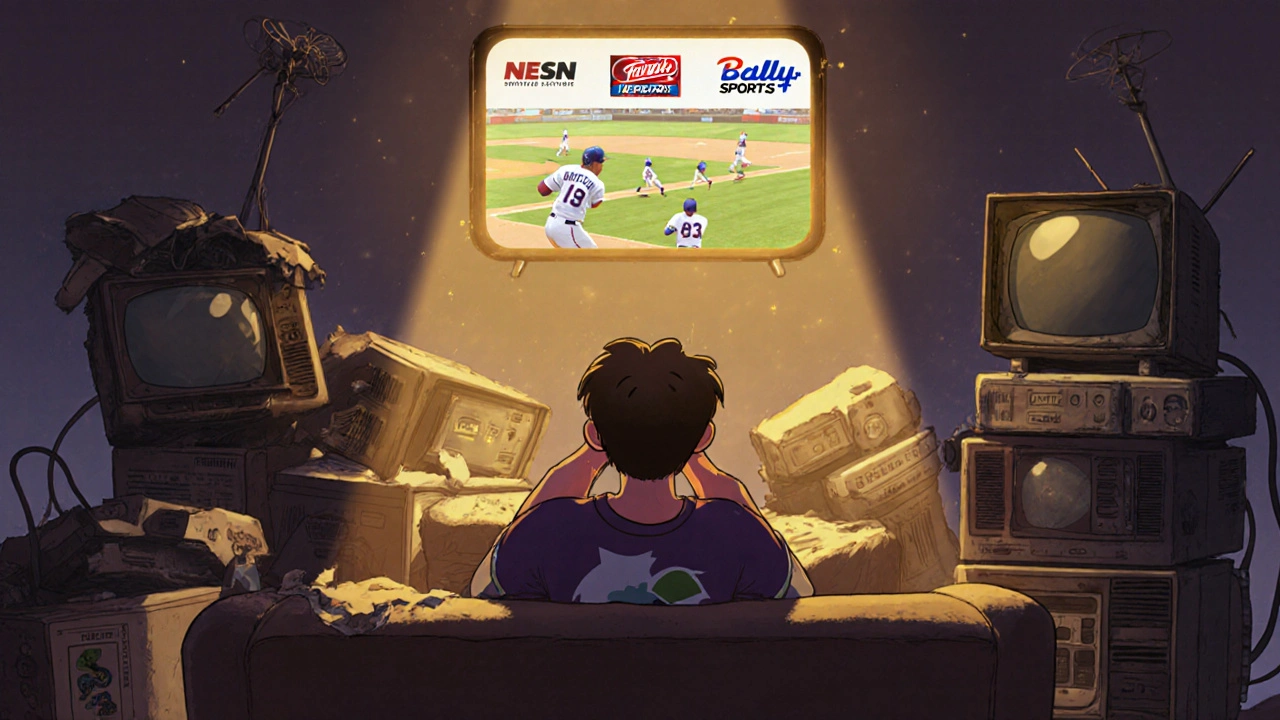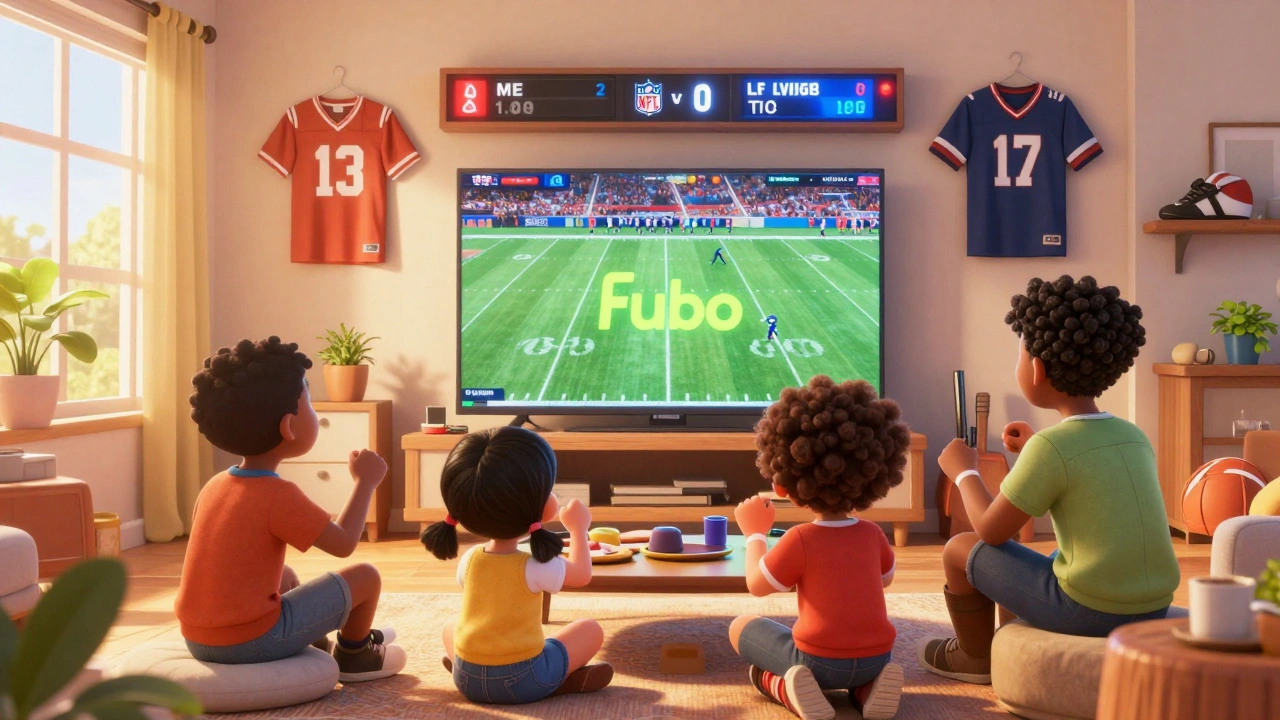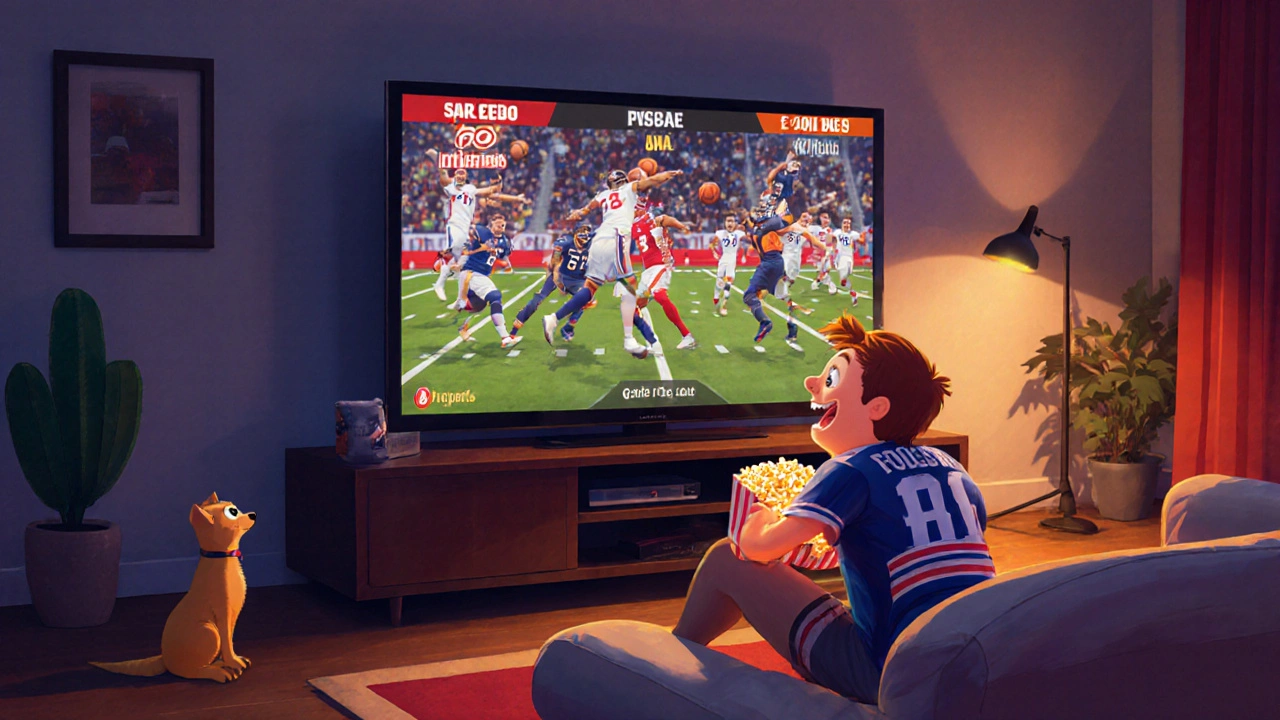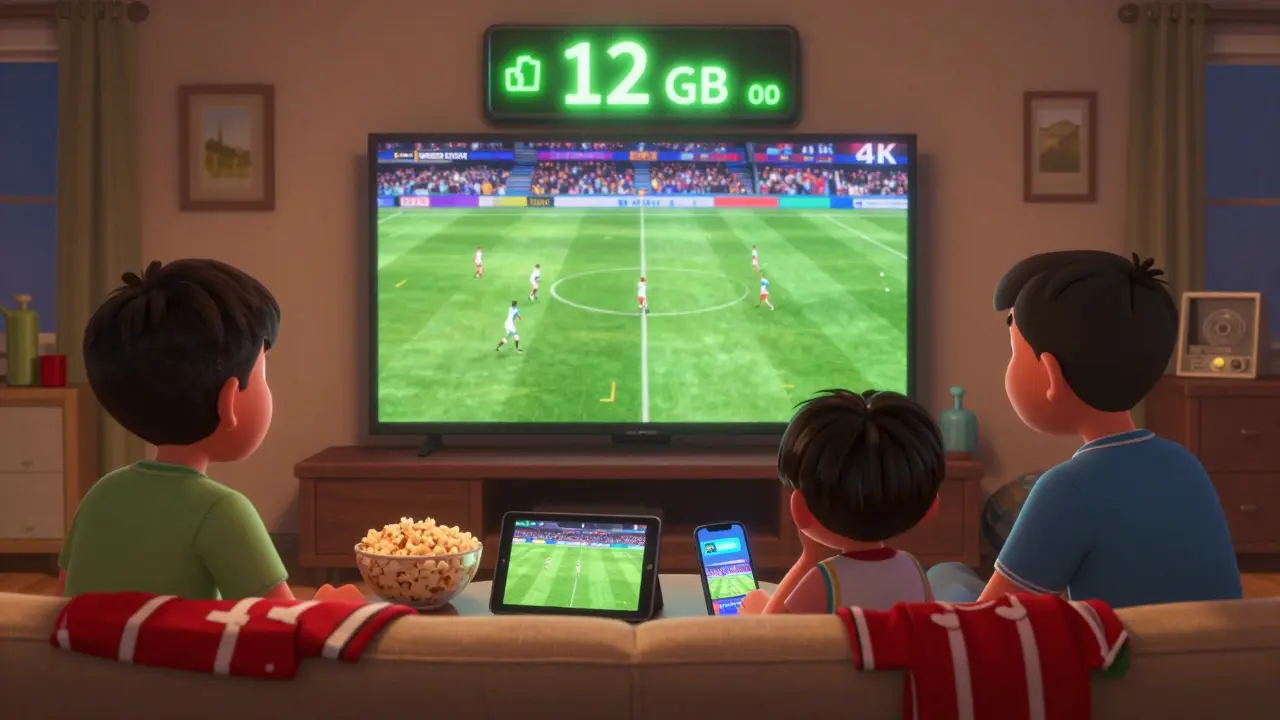For decades, if you wanted to watch your local baseball, hockey, or basketball team, you had no choice: you needed a cable package that included your Regional Sports Network, or RSN. These channels-like Bally Sports, NESN, or MSG Network-were the only way to get live games that weren’t picked up by national TV. But now, that model is falling apart. Cable subscriptions are dropping. RSNs are losing money. And fans are getting angry. So what’s happening? The answer is simple: RSNs are moving to streaming.
Why RSNs Are in Crisis
RSNs used to be gold mines. They charged cable companies like Comcast and Spectrum hundreds of millions of dollars a year just to carry their channels. Those fees got passed down to you, the viewer, in your monthly bill. In 2020, the average American paid $12 a month just for one RSN-even if they only watched one game a week.
But here’s the problem: fewer people are paying for cable. In 2025, over 40% of U.S. households have cut the cord. That means RSNs lost half their revenue source overnight. At the same time, broadcast rights costs keep rising. The NBA’s new $76 billion TV deal? The NHL’s $3.5 billion extension? Those deals didn’t come with a magic fix for RSNs. They just made the debt bigger.
By 2023, Bally Sports had filed for bankruptcy. MSG Network lost the New York Knicks’ regional rights after failing to strike a deal with Charter. Even ESPN, which owns half of many RSNs, started pulling back. The old system wasn’t broken-it was dead.
What’s Replacing Them?
Enter streaming. Not just any streaming-dedicated, team-specific streaming services. Instead of bundling games into a cable package, teams and RSNs are now selling them directly to fans.
The model? Pay-per-team. For example, if you live in the Boston area and want to watch the Bruins or Red Sox, you don’t need a full cable plan anymore. You can subscribe to NESN directly through its app for $29.99 a month. Same with the Chicago Cubs: you can get Marquee Sports Network for $24.99. No middleman. No hidden fees. Just the games you care about.
Some teams are going even further. The Atlanta Hawks and Braves now offer their own streaming apps with no third-party branding. The Los Angeles Lakers sell their games through their own website. These aren’t just apps-they’re new businesses. They collect your email, track your viewing habits, and sell you merch right after the final buzzer.
How It Works: The New Streaming Setup
If you’re trying to switch from cable to streaming for local games, here’s what you actually need to do:
- Find your team’s official RSN. Google “[Your Team] + streaming” or check the team’s website under “Watch” or “Live Stream.”
- Look for the official app: it’s usually branded as the RSN name (e.g., “Bally Sports+,” “Marquee Sports Network,” “NESN 360”).
- Download the app on your phone, tablet, Roku, Fire Stick, or Apple TV.
- Sign up with your email and payment info. Most offer a 7-day free trial.
- Use your home internet. Most RSN streaming services block access outside your local market-so if you’re in Ohio, you won’t see Boston games unless you use a VPN (which violates most terms of service).
Some services even let you watch on multiple devices at once. Others limit you to one screen. Some include replays and highlights. Others don’t. It varies by team.

What You’re Losing (and Gaining)
Switching to streaming isn’t all upside. Here’s what you might miss:
- No bundled deals: Cable packages used to include RSNs with sports channels like ESPN. Now you pay for each one separately.
- Geographic locks: If you move out of your team’s broadcast zone, you lose access. No more watching your hometown team while you’re in college or on vacation.
- Ads are worse: Streaming RSNs show more commercials than cable ever did. Some games have 18 minutes of ads per hour.
But you gain control:
- No long-term contracts: Cancel anytime. No early termination fees.
- Lower cost: Even if you pay for two RSNs, it’s still cheaper than a full cable bill.
- More flexibility: Watch on your laptop during lunch. Pause the game to take a call. Rewind a bad call.
What About the Big Players?
Not every team can go solo. Smaller-market teams still rely on big RSN platforms like DIRECTV STREAM or FuboTV to carry their games. These services act as middlemen-they bundle multiple RSNs into one subscription.
For example, DIRECTV STREAM offers a “Sports Pack” that includes Bally Sports, NESN, and others for $19.99 extra per month. That’s cheaper than buying each RSN individually, but you’re still stuck with a bundle. If you only want one team, it’s not worth it.
Meanwhile, national streamers like YouTube TV and Hulu + Live TV are slowly dropping RSNs. Why? Because they can’t afford the fees anymore. In 2024, YouTube TV lost access to 12 RSNs across 18 markets. Fans in those areas had to switch to team apps or miss games entirely.

What’s Next?
The future isn’t just streaming-it’s fragmented. You won’t have one app for all your local sports. You’ll have five. One for hockey, one for baseball, one for basketball. Each with its own login, its own billing cycle, its own app updates.
Some teams are experimenting with shared platforms. The NBA’s “NBA League Pass” now includes local games for subscribers in certain markets. MLB is testing a similar model. But so far, most teams are sticking with their own apps. Why? Because they want the data. They want to own the relationship with you.
And if you’re a fan who hates juggling subscriptions? You’re not alone. But there’s no going back. Cable is gone. RSNs are evolving. The question isn’t whether they’ll survive-it’s whether you’ll adapt.
Who Benefits? Who Gets Left Behind?
Teams and RSNs win. They keep more money. They control the experience. They know who you are and what you watch.
Streaming platforms like Roku and Apple TV win too. They get more users, more engagement, more data.
But what about the average fan? The one who just wants to watch the game without signing up for three apps and paying $70 a month? That person is getting squeezed. If you’re not tech-savvy, if you’re on a fixed income, if you’re an older fan who doesn’t know how to set up a Fire Stick-this shift is harder than it looks.
Some RSNs are trying to help. NESN offers a $15/month “Basic” plan with just live games and no extras. Bally Sports+ has a $19.99 tier with no ads on replays. But these options are buried in the app. Most fans don’t even know they exist.
Final Thoughts
The shift from cable to streaming isn’t a trend. It’s a full-on rewrite of how you watch local sports. The old system is gone. The new one is messy, expensive, and confusing-but it’s here to stay.
If you’re ready to make the switch, start with your team’s official site. Don’t trust third-party listings. Don’t assume your old cable provider still carries the game. And don’t pay for a bundle if you only watch one team.
Local sports still matter. But now, you have to fight for them. And you have to pay for them. The good news? You’re finally in control. The bad news? You’re also on your own.
Can I still watch my local team on cable TV?
It’s getting harder. Most major cable providers have dropped RSNs like Bally Sports and NESN because they can’t afford the fees. Some smaller providers still carry them, but coverage is patchy. If you rely on cable, check your provider’s channel list before the season starts-many RSNs have already disappeared.
Do I need a VPN to watch my team’s games if I’m out of town?
Technically, yes-but you shouldn’t. Most RSN streaming services block access outside your local market, and using a VPN violates their terms of service. Your account could get suspended. If you travel often, consider a national streaming option like NBA League Pass or MLB.TV instead.
Is it cheaper to stream RSNs than to keep cable?
Usually, yes. A single RSN subscription costs $20-$30/month. A full cable package with sports channels can cost $80-$120/month. If you only watch one or two local teams, streaming saves you 50-70%. But if you follow five teams, your total could be close to cable prices.
Why do RSN streaming apps have so many ads?
Because they need to replace lost cable revenue. When cable companies paid RSNs for carriage, those fees covered production and ads. Now, RSNs rely almost entirely on ad sales. So they cram in more commercials-sometimes 18-20 minutes per hour-to stay afloat.
What’s the best streaming service for regional sports?
There’s no single best service. If you want one team, go direct to the RSN’s app. If you follow multiple teams, try DIRECTV STREAM or FuboTV-they bundle several RSNs. But always compare the total cost. Sometimes buying each RSN separately is cheaper than a bundle.




